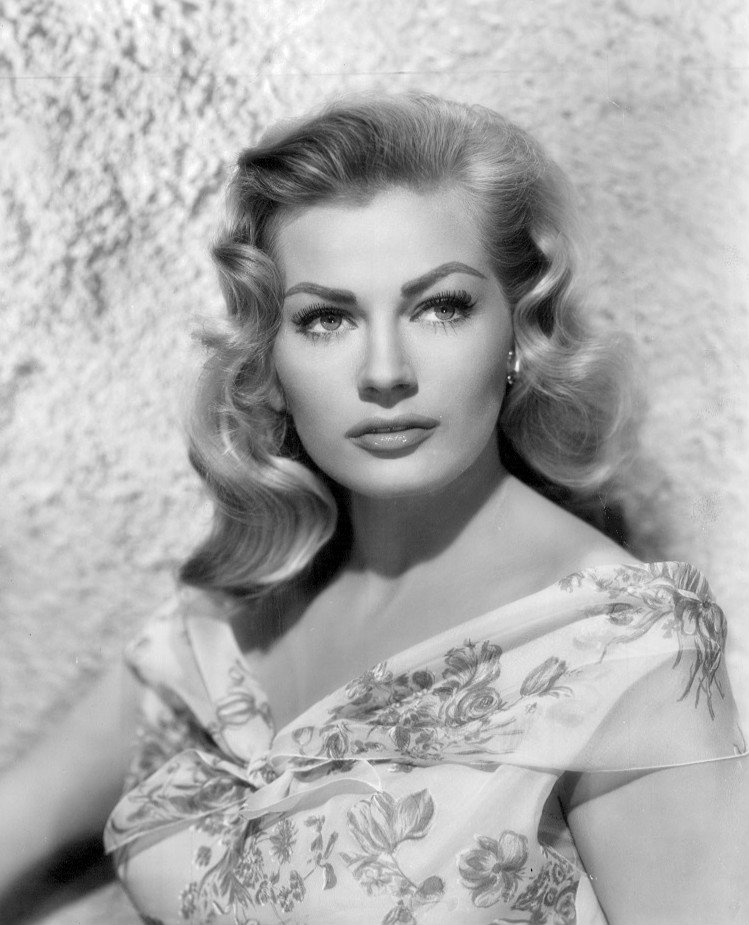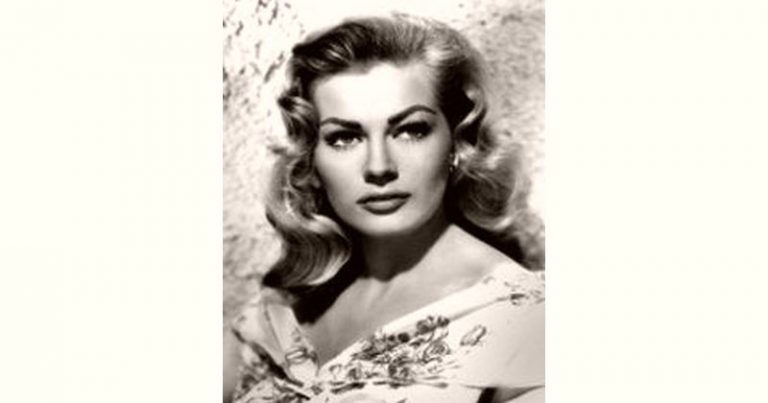The iconic Anita Ekberg, a name synonymous with Hollywood glamour and the iconic film "La Dolce Vita," is a subject of fascination for many. One of the most memorable scenes in cinema history involves Ekberg's character, Sylvia, taking a dip in the Trevi Fountain, creating an indelible image that has captivated audiences for decades. While this scene has become an enduring symbol of old-Hollywood allure, it also sparks curiosity about the actress's life and career, especially regarding her approach to nudity and its impact on her legacy.
Anita Ekberg: A Life in Cinema

Born in 1931 in Sweden, Anita Ekberg’s rise to stardom was nothing short of a fairy tale. Her journey began with her crowning as Miss Sweden in 1950, which led to a contract with a Hollywood studio and her subsequent move to the United States. In a time when Hollywood was a magnet for European talent, Ekberg’s striking beauty and unique presence quickly caught the attention of filmmakers.
Ekberg's career spanned several decades, with notable roles in films such as War and Peace, Hollywood or Bust, and, of course, La Dolce Vita. Her collaborations with renowned directors like Federico Fellini and Billy Wilder solidified her place in cinematic history. However, it was her role in La Dolce Vita that truly immortalized her, not just as an actress but as an enduring symbol of sensuality and sophistication.
The Iconic Trevi Fountain Scene: A Study in Sensuality

The Trevi Fountain scene in La Dolce Vita is a masterpiece of subtle eroticism. Directed by Fellini, this scene captures the essence of Roman nightlife and the allure of a city that never sleeps. Ekberg’s character, Sylvia, is a seductive, enigmatic presence, and her nude bath in the fountain has become an iconic image, frequently referenced and replicated in popular culture.
The scene's impact goes beyond its visual appeal. It represents a turning point in cinematic depictions of female sexuality, challenging traditional norms and pushing the boundaries of what was acceptable on screen. Ekberg's performance, with its mix of vulnerability and confidence, showcases her incredible range as an actress.
Impact and Legacy
The Trevi Fountain scene’s influence on fashion, art, and popular culture cannot be overstated. It inspired countless artists, photographers, and filmmakers, shaping the way female sensuality was portrayed in media. Ekberg’s fearless approach to her craft and her willingness to push boundaries made her a trailblazer, opening doors for future generations of actresses.
Despite the controversy that often surrounds discussions of female nudity in cinema, Ekberg's performance in this scene is celebrated for its artistic merit and its role in advancing the portrayal of women on screen. It is a testament to her talent and her willingness to take risks, adding depth and complexity to her character and the film itself.
Anita Ekberg’s Approach to Nudity: A Personal Choice
Anita Ekberg’s decision to appear nude in La Dolce Vita was a calculated move, driven by her artistic vision and trust in Fellini’s direction. In an era where female actors often had little control over their on-screen portrayals, Ekberg’s agency in this choice is noteworthy. She understood the power of her image and used it to make a statement, both about her character and about the evolving role of women in cinema.
The Evolution of On-Screen Nudity
Ekberg’s performance in La Dolce Vita is a significant milestone in the evolution of on-screen nudity. While nudity had been present in cinema before, it was often used gratuitously or as a form of exploitation. Ekberg’s scene, however, was a departure from this norm. It was an artistic choice, carefully crafted to enhance the narrative and add depth to the character.
This scene, and others like it, began a dialogue about the purpose and context of nudity in cinema. It forced audiences and critics to reconsider their perceptions of female nudity, challenging the notion that it was solely for male gaze or exploitation. Instead, it showcased how nudity could be a powerful tool for storytelling and character development.
The Impact on Ekberg’s Career and Legacy
While the Trevi Fountain scene brought Ekberg immense fame and cemented her status as an icon, it also had its challenges. The scene overshadowed some of her other remarkable performances, reducing her complex career to a single moment. This is a common issue faced by actresses whose work involves nudity or sexually charged scenes.
Despite this, Ekberg's legacy remains strong. Her impact on cinema, fashion, and popular culture is undeniable. Her fearless approach to her craft, her willingness to challenge norms, and her iconic status continue to inspire and influence artists and audiences alike.
The Lasting Appeal of Anita Ekberg
Anita Ekberg’s appeal extends beyond her physical beauty and iconic roles. Her charisma, intelligence, and unique presence on screen made her a true star. Her performances were always nuanced and engaging, showcasing her range as an actress and her ability to bring depth to even the most seductive of characters.
Ekberg's impact on fashion is also noteworthy. Her style, often characterized by elegant gowns and a sophisticated, Old Hollywood glamour, continues to inspire designers and fashion icons. Her sense of style, much like her performances, was a blend of classic sophistication and a modern, sensual appeal.
Anita Ekberg’s Influence on Contemporary Culture

Anita Ekberg’s influence can be seen in modern cinema and popular culture. The discussion around female representation and nudity in media continues, with many artists and filmmakers drawing inspiration from her iconic roles and fearless approach.
Today, actresses and filmmakers are increasingly taking control of their on-screen portrayals, a trend that can be traced back to pioneers like Anita Ekberg. Her work continues to inspire conversations about the power of female sensuality, the importance of artistic agency, and the evolving role of women in media.
The Legacy Lives On
Anita Ekberg’s legacy is a testament to her talent, her bravery, and her impact on the entertainment industry. Her performances, especially in La Dolce Vita, continue to captivate and inspire new generations of viewers and artists. Her contribution to cinema and popular culture is undeniable, and her iconic status ensures that her name and image will forever be associated with the golden age of Hollywood and the enduring allure of Old World glamour.
How did Anita Ekberg’s career evolve after “La Dolce Vita”?
+After the success of “La Dolce Vita,” Ekberg’s career continued with roles in films like “Clown in Venice” and “4 for Texas.” However, she never achieved the same level of critical acclaim and box office success as she did with “La Dolce Vita.” Her later career was marked by a mix of television appearances and smaller film roles.
What was the public reaction to the Trevi Fountain scene at the time of release?
+The scene caused quite a stir upon the film’s release in 1960. It was controversial, with some audiences and critics praising its artistic merit and others criticizing it for being too provocative. Despite the controversy, the scene became an instant classic, solidifying Ekberg’s status as an icon.
Did Anita Ekberg have any regrets about her role in “La Dolce Vita”?
+There is no evidence to suggest that Ekberg had any regrets about her role in the film. In fact, she often spoke fondly of her experience working with Fellini and the impact the film had on her career. She understood the importance of the scene and its contribution to cinematic history.